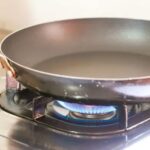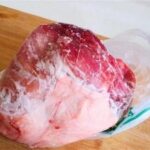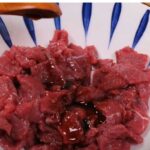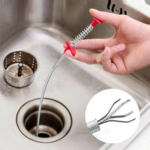Non-stick pans are a familiar kitchen tool, making cooking easier thanks to their effective non-stick capability. However, after prolonged use, non-stick pans tend to lose their non-stick properties, causing food to stick to the pan during frying or stir-frying. Instead of hastily discarding your old pan and buying a new one, try these tips to restore your non-stick pan and cook with ease while still ensuring tasty meals.
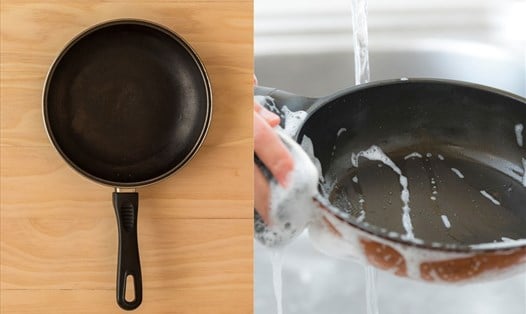
Non-Stick Pan
1. Use Cooking Oil and Salt
One of the simplest methods to restore your pan’s non-stick property is by using cooking oil and salt. Here’s how you do it:
First, clean your pan and ensure it is completely dry.
Next, sprinkle a layer of salt onto the pan’s surface, place it on the stove, and heat it over low heat for about 5-10 minutes. The salt will absorb any residue on the pan’s surface and help clean the old non-stick coating.
Once done, let the pan cool down, discard the salt, and wipe the pan’s surface with a soft cloth.
Finally, add a small amount of cooking oil to the pan, turn on the stove, and heat it over low heat for a few minutes. The oil will create a new protective layer, enhancing the non-stick capability.
Instead of discarding your old pan, give these tips a try to restore its non-stick properties and continue cooking with ease while enjoying delicious meals.
2. Revitalize Your Pan with Vinegar and Cooking Oil
Vinegar is a natural ingredient with excellent cleansing properties. Combine vinegar and cooking oil to give your non-stick pan a new lease of life:
Start by diluting vinegar with water (1:1 ratio), then pour the mixture into the pan and bring it to a boil.
Let the vinegar-water mixture simmer in the pan for about 5 minutes, then turn off the heat, allow it to cool, and discard the liquid.
Wipe the pan dry, add cooking oil, and heat it over low heat for 2-3 minutes. This oil layer will restore the pan’s surface to a smooth, glossy state, reducing food sticking during cooking.
3. Avoid Excessive Heat
One of the main reasons non-stick pans lose their effectiveness is due to excessive heat during cooking. High temperatures can damage the non-stick coating, leading to food burning and sticking to the pan. Therefore, when using a non-stick pan, opt for moderate heat to protect your pan and ensure tasty, moist meals.
4. Choose Suitable Recipes
To prolong the lifespan of your non-stick pan, avoid using it for recipes that require deep-frying at high temperatures or prolonged cooking. Light frying, pan-frying, or stir-frying are better choices, as they are gentler on the pan and produce the best-tasting results.
When your non-stick pan starts to lose its initial performance, there’s no need to discard it immediately. With simple tricks like using salt, vinegar, and cooking oil, you can easily restore its non-stick properties and continue using it effectively. Proper pan care is essential to extend its lifespan and maintain convenient, cost-effective, and environmentally friendly cooking experiences.
The Magic of Salt: Unclogging Drains with a Simple Household Ingredient
Introducing a dynamic duo that goes beyond the kitchen: salt and its trusty companions. Their union isn’t just about adding flavor to your meals; it’s a powerful partnership that can unclog your drains in a flash. Yes, you heard that right! This dynamic duo is a quick fix for those pesky clogs, saving you time and hassle.

























